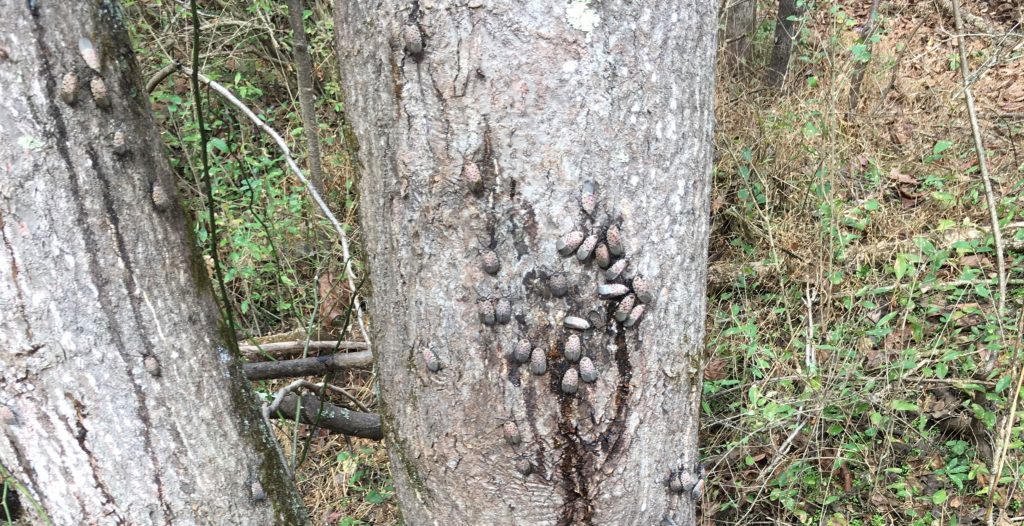Pennsylvania Agriculture Secretary Russell Redding announced on March 4 that twelve counties have been added to Pennsylvania’s Spotted Lanternfly quarantine zone ahead of the 2020 spring hatch. With this addition, the quarantine for this invasive pest is now at 26 counties.
“The Spotted Lanternfly is more than a pest in the literal sense,” said Redding. “It’s wreaking havoc for home and business owners; kids who just want to play outside; Pennsylvania agriculture and the economy of the state we all call home. Whether you think it’s your job or not, we need every Pennsylvanian to keep their eyes peeled for signs of this bad bug – to scrape every egg mass, squash every bug, and report every sighting. We need to unite over our hatred for this pest over our common love: Pennsylvania.”
The new dozen counties are not completely infested, but rather have one to three municipalities with a known infestation which led to a quarantine being placed on the entire county out of an abundance of caution. Allegheny, Beaver, Blair, Columbia, Cumberland, Huntingdon, Juniata, Luzerne, Mifflin, Northumberland, Perry, and York have been added to the quarantine for 2020.
“Most of these municipalities have already been aggressively treated,” said Dr. Ruth Welliver, director of the Bureau of Plant Industry. “With continued aggressive treatment and monitoring, and an actively engaged community, we can strike Spotted Lanternfly from these counties.”
Quick, aggressive treatment to newly identified populations of Spotted Lanternfly in Pennsylvania was funded through the Rapid Response Disaster Readiness line of Governor Wolf’s 2019 PA Farm Bill. The 2020 PA Farm Bill proposes another $3 million to combat Spotted Lanternfly, plus an extra $1 million that is uncommitted to readily act in the event of the next agricultural disaster.
Businesses that operate in or travel through quarantined counties are required to obtain a Spotted Lanternfly permit; fines associated with noncompliance can be up to $300 for a criminal citation. Homeowners with questions about treatment are encouraged to contact their local Penn State Extension office or learn about management, including approved sprays, online. Pennsylvanians who live inside the quarantine zone should also review and sign the Compliance Checklist for residents.
For more information on Spotted Lanternfly, visit agriculture.pa.gov/spottedlanternfly. For more about Governor Tom Wolf’s PA Farm Bill and its investments in a sustainable agriculture industry visit agriculture.pa.gov/pafarmbill.
NATURE NUGGET: (be sure to “spring forward” an hour this weekend!)
American railroads maintained many different time zones during the late 1800s. Each train station set its own clock making it difficult to coordinate train schedules and confusing passengers. Time calculation became a serious problem for people traveling by train (sometimes hundreds of miles in a day), according to the Library of Congress. Every city in the United States used a different time standard, so there were more than 300 local sun-times to choose from. Railroad managers tried to address the problem by establishing 100 railroad time zones, but this was only a partial solution to the problem.
Operators of the new railroad lines needed a new time plan that would offer a uniform train schedule for departures and arrivals. Four standard time zones for the continental United States were introduced on November 18, 1883.
NATURE QUOTE:


“Porcupine Pat” McKinney is environmental education coordinator for the Schuylkill Conservation District and provides programming for people of all ages with an emphasis on schools, public programming and nature center development. “Porcupine Pat” hails from Marion, Ohio and has a BS with Distinction in Natural Resources – Environmental Interpretation from Ohio State. He is a recipient of the prestigious Sandy Cochran Award for Excellence in Natural Resources Education from the PA Forestry Association, the Schuylkill Pride Award, and the PAEE “Outstanding Environmental Educator Award.”

